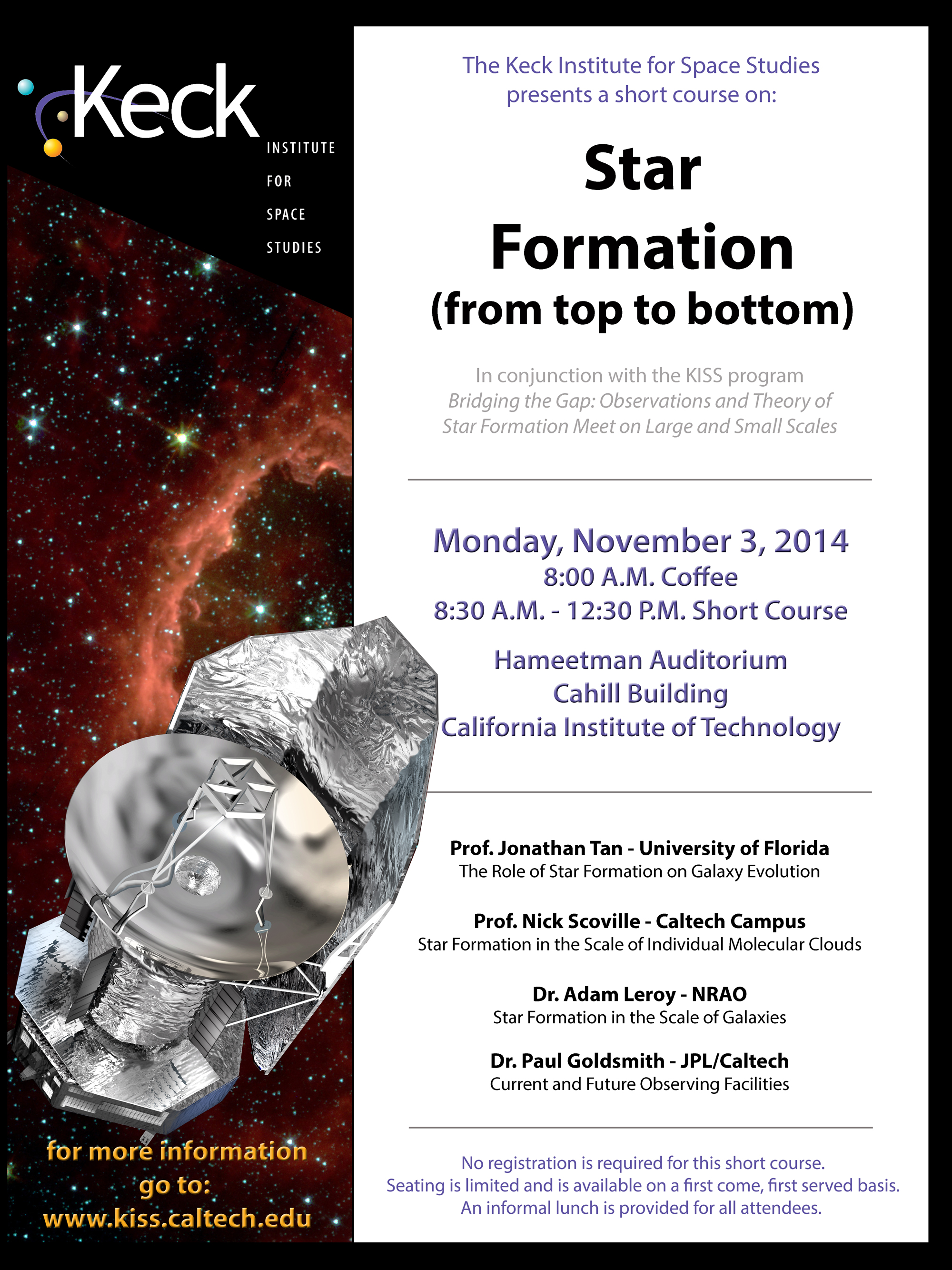Star Formation (top to bottom)
Monday, November 3, 2014
8:30 A.M. - 12:30 P.M.
(refreshments at 8:00 A.M.)
Informal lunch provided at 12:30 P.M. for all attendees
Hameetman Auditorium, Cahill Building
Caltech Campus

Speakers:
- Prof. Jonathan Tan (University of Florida) - The Role of Star Formation on Galaxy Evolution
- Prof. Nick Scoville (Caltech Campus) - Star Formation in the Scale of Individual Molecular Clouds
- Dr. Adam Leroy (NRAO) - Star Formation in the Scale of Galaxies
- Dr. Paul Goldsmith (JPL/Caltech) - Current and Future Observing Facilities
Abstract:
The drive to understand galaxy formation and evolution over the lifetime of the universe has justified vast space-based and ground-based facilities, as well as the development of new technologies. The alchemy of star formation, and the modes by which that activity couples to the broader galactic environment, occurs on small spatial scales. These scales, however, can only be traced with great sophistication in the local universe, as witnessed by observations using Spitzer, Herschel, SOFIA, and ALMA. The scales studied in the local universe are "sub-grid" for the purpose of cosmological simulations that make valiant efforts to include the physics of star formation and its feedback to the local environment. The fundamental uncertainties in how this sub-grid physics is incorporated into the larger picture are by far the greatest limitation in successfully modelling, and fundamentally understanding how galaxy formation and evolution actually works.
In this short course we will provide the fundamentals on the role of star formation and feedback in the evolution of galaxies. We will cover the coupling of star formation with its environment acting from the scale of individual molecular clouds to that of entire galaxies. We will also review the current and future observing capabilities that will be available to further study star formation and its role in the evolution of galaxies over a wide range of physical scales.
Short Course Presentations |
|
|
Jonathan Tan |
The Role of Star Formation on Galaxy Evolution |
|
Nick Scoville |
Star Formation in the Scale of Individual Molecular Clouds |
|
Adam Leroy |
Star Formation in the Scale of Galaxies |
|
Paul Goldsmith |
Current and Future Observing Facilities |